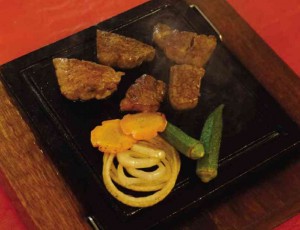
Thanksgiving is a curious American holiday if you think about it, with the President pardoning a turkey and families burning jet fuel to get together to eat an extremely difficult to cook bird with a sweet sauce and a pie made from a normally savory vegetable. That some Filipinos celebrate Thanksgiving is a cause for the usual apoplectic invective from nationalist and postcolonial groups, but as long as the bird is good and I don’t have to eat the pumpkin pie, I’m not one to complain.
Time to give thanks
Ironically, divorcing Thanksgiving from its American historical origins with Pilgrims and American Indians sharing a harvest brings it closer to its ecclesiastical origins as a feast day to give thanks for blessings from God, which is as good a reason as any to convene with family or friends for a good meal. Almost all turkey that is eaten in America or the Philippines is frozen and should be thoroughly defrosted before it is fried. I’m convinced that frying is the only way to do justice to the kind of turkey we get in the Philippines, and yields a meat that is juicy and whose fibers have not seized up into bits of twine.
Free-range turkeys, bought fresh, usually start out as day-old chicks in May or June, and are fully grown by the end of November, though they get a little bigger when Christmas comes around, which is another opportunity to eat turkey. Fresh, pastured turkey has a different flavor and texture from a Butterball turkey, which has up to 8 percent additives (mostly water) to make it up to the inside of a very thick breast, and is gamier, but more flavorful if properly seasoned and stuffed. Even in England and France it is replacing the more traditional goose as an easier breed to cook for Christmas dinner—easier to cook and carve and with more meat to go around.
Japanese delicacy
For celebrations we prefer to eat something from far away rather than ready to hand, which is a natural impulse because we want to mark a special occasion by having something rare rather than readily available. Probably one of the most amazing delicacies to arrive at our shores, retailing for a toe-curling P12,000 a kilo, is real wagyu beef from Japan. The best place to have it is at an unassuming shop in Sunvar Plaza, at the opposite end of Mile Long from where Louie’s THX Cinema used to be. If you’re old enough to remember Louie’s THX then you probably shouldn’t be having a lot of wagyu.
The meat that they sell at the shop is grade A5, the highest available, and within the grade there is a beef marbling standard (BMS), graded from 1 to 12. When Wagyu Japanese Beef, which is what the shop/restaurant is called, started out, it was more of a meat shop that cooked some of the beef for you to try on the side. Now it seems that it’s more of a restaurant that sells some retail beef on the side, the rest, presumably, going to the trade. The lack of pretentiousness in the décor is reassuring, because you know that the money is going mostly to the produce, and not to flowers.
Wagyu two ways
There are two ways they do wagyu in the shop: cut into thin slices and then steamed in a bamboo basket over vegetables; or grilled on a stone slab. Both have their merits. The steamed
slices showcased the purity of flavor more, and there is more bite to it so that you smell the fat as it melts in your mouth, but you don’t quite feel the grease in the same way. I could see the merits of coming in for a quick meal at lunchtime: three sizeable strips of beef, generous vegetables with mushrooms underneath, two dipping sauces and a bowl of rice.
But to really experience the butteriness of perfectly marbled wagyu (we were told we had been given a BMS 11 cut), the seared cubes on a hot stone grill is the way to go. They recommend the chateaubriand and the fillet, which are more expensive, but leaner cuts, the most tender portions of the cow but usually a little blander and less marbled than the sirloin. The fillet was one of the best pieces of beef I’ve ever had, sprinkled with a bit of plum salt and pepper. But for the full-on experience of beef that tastes like butter, go for the sirloin on the hot grill, still a little red in the middle. The rush is like injecting something right into your bloodstream.
Some might say it’s a little bit too fatty, like making a meal of only the skin of KFC chicken or only the crackling of a lechon.
Although the price per kilo is fairly steep, it is unlikely that you’ll want (or survive) large, porterhouse-sized slabs of it. Like foie gras, a little goes a long way and moderation is in order—if you want to live to see another week, which is how long I’m giving myself before heading back.
This is cow that has been transformed by the philosopher’s stone into something sublime and almost too good for this world, and more than a little of it will kill you.
That I’m still alive to write this is one of the things, among many, that I must be thankful for. A happy Thanksgiving to all.
Wagyu Japanese Beef is at the G/F of Sunvar Plaza on Amorsolo Street corner Pasay Road, Makati City. Call 8089508.